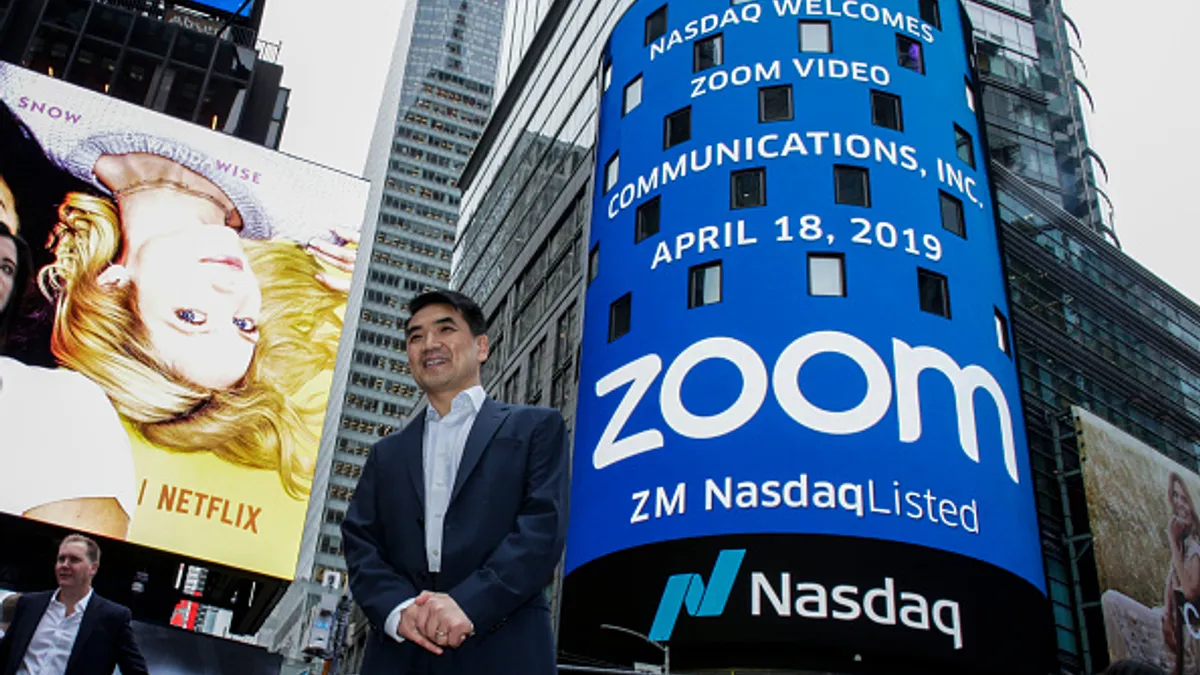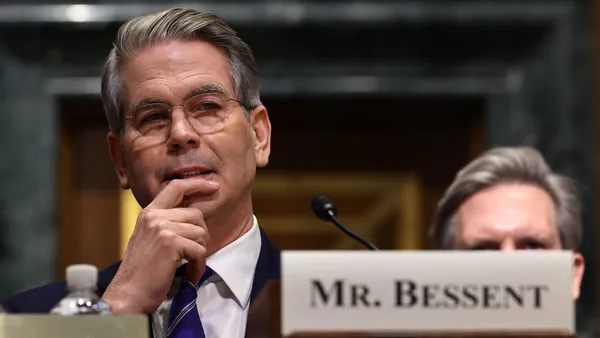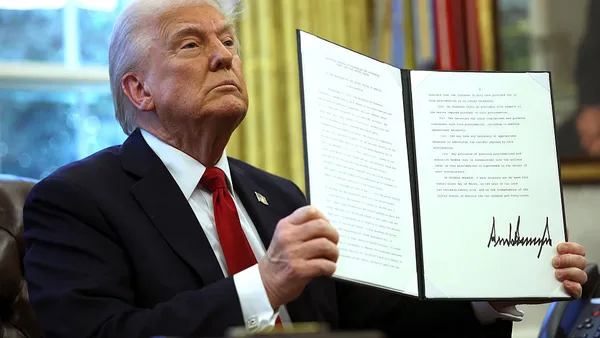Dive Brief:
- Claims for unemployment benefits edged up in mid-April, showing that the global tariffs announced by President Donald Trump early this month posed no immediate setback to payrolls or the broader U.S. labor market.
- Jobless claims increased by 6,000 for a total of 222,000 during the week ended April 19, the Labor Department said Thursday, remaining within a narrow range during the past two months.
- So-called continuing claims, which indicate the number of people receiving unemployment benefits, fell to 1.84 million in the week ended April 12, or 37,000 fewer than the previous week’s level.
Dive Insight:
Disruptions from Trump’s import duties — including 10% baseline tariffs against virtually every U.S. trading partner and 145% tariffs on imports from China — will probably roil the job market in coming weeks, according to economists.
Payrolls rose 228,000 and unemployment stood at 4.2% last month. The data underscore the strength of the economy before Trump’s so-called Liberation Day announcement of sweeping tariffs on April 2, EY Chief Economist Gregory Daco said in a statement on Wednesday.
“Yet downside risks to the labor market have escalated significantly in recent weeks,” Daco said.
The jobless rate will likely increase “toward 5% as economic activity slows and business leaders look to manage labor costs amid elevated input costs,” Daco said. In turn, average monthly job growth will probably slow to 50,000 this year from 160,000 in 2024, he said.
Trump’s import duties dim the employment and general business outlook for small businesses in particular, American Action Forum President Douglas Holtz-Eakin said Thursday.
Small companies purchase 40% of the U.S. imports from China, 31% of the goods from Canada and 22% of the products imported from Mexico, he said.
Businesses with fewer than 500 workers employ more than 60 million workers, or nearly half of the U.S. workforce in 2023, Holtz-Eakin said in a statement. “Those jobs are at risk from the tariffs.”
Yet tariffs have prompted caution in hiring among businesses regardless of size, the 12 district banks of the Federal Reserve said Wednesday in the so-called Beige Book report.
“Several districts reported that firms were taking a wait-and-see approach to employment, pausing or slowing hiring until there is more clarity on economic conditions,” according to the Atlanta Fed, which compiled the report.
Shifts in U.S. trade policy have clouded the outlook for an otherwise steady economy, according to the report. “Economic activity was little changed since the previous report, but uncertainty around international trade policy was pervasive across” the 12 Fed districts.














